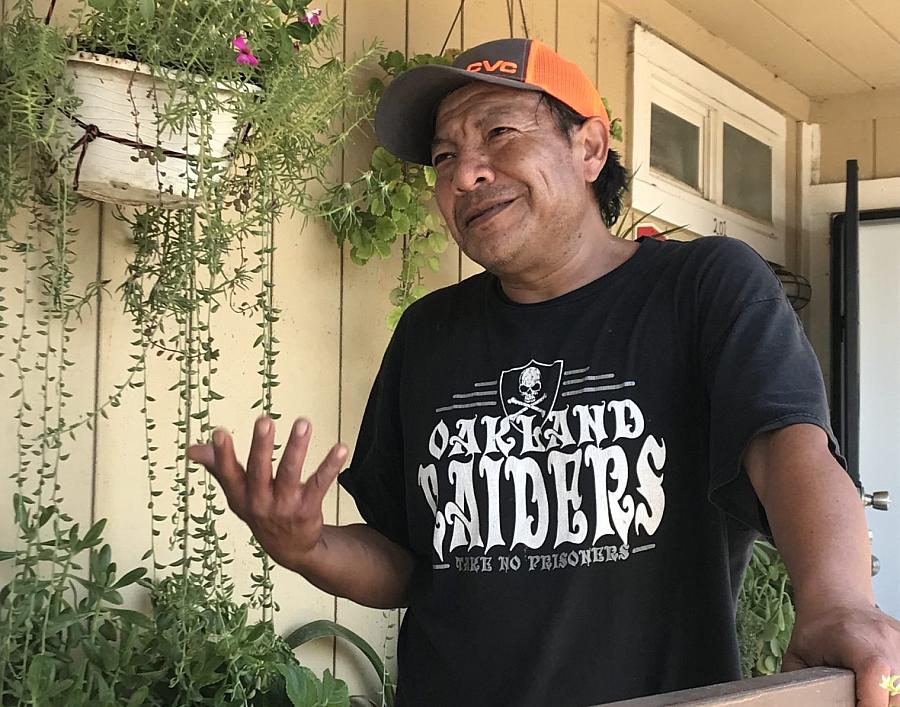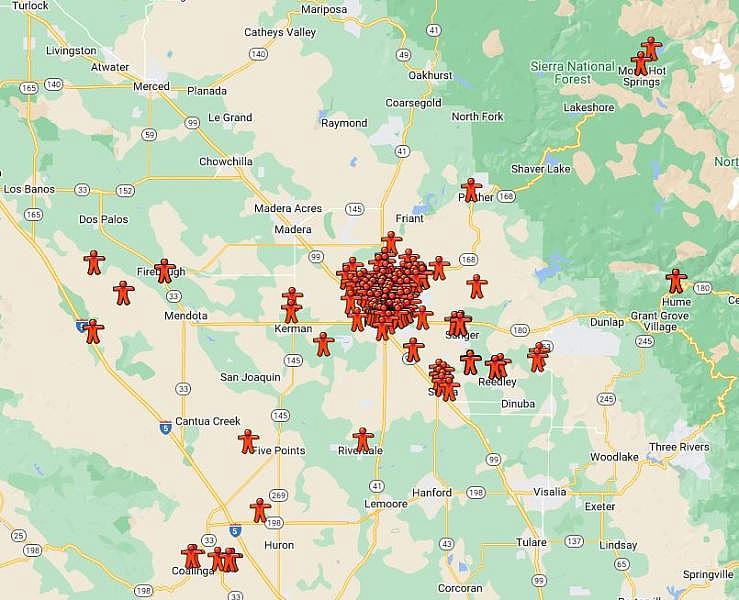These strategies helped me go deeper into communities suffering the most from brutal heat

Guillermo Hernandez, a renter in Fresno, was told by his doctor that he needs to stay out of the heat because of the medication he takes. However, the high cost of AC and thin apartment walls makes it difficult to stay cool indoors.
(Photo courtesy of Monica Vaughan)
On days where temperatures in Fresno reach triple digits — and there are many — the roughly 1,700 unsheltered residents have very few places to escape the heat and protect their health. Even those who are housed in Fresno must contend with outdated buildings and high air conditioning costs.
In recent years Fresno has faced increasingly long and intense heatwaves. For instance, in 2021, Fresno experienced a record-breaking 69 days of triple-digit heat. This year rivaled that record with 65 days that reached 100 degrees or more, and temperatures remained in the mid-90s through the end of September. The reality is that such extreme heat waves will continue as a result of climate change.
Despite this, there was previously very little reporting on the health impacts Fresno residents are facing from heat, and the “Heating Up” project I reported as a Center for Health Journalism fellow aimed to change that.
Over the course of six months, I spoke with some 50 unhoused residents, more than 20 renters and a couple homeowners about their health in the summer. Their stories and experiences shaped the project and were central to each story in the series.
Reporting for vulnerable communities about health, a topic that is often considered sensitive, has many challenges. One thing I found helpful was to tailor the way I reported to each community I wanted to focus on.
A map showing 911 calls for heat related emergencies in 2021 and 2022. In 2021, there were 349 heat related emergency calls, and as of August 12, there have been more than 200 heat related emergency calls this year. Courtesy of Fresno County Emergency Medical Services. (Image via Cassandra Garibay)
For instance, I knew from past experiences with engagement reporting that social media callouts and going door-to-door to speak with renters often yielded many responses from renters. However, the same approach would not be as helpful in reaching the unhoused community.
So, here are some steps I took to carry out this project, and what I learned from doing so:
-
I reached out to local organizations that work with the communities I wanted to reach early into the process. I contacted these organizations prior to starting my reporting to see if anyone had leads on who I should talk to or where I should focus my outreach efforts. This, along with studies on the lack of tree canopy in Fresno, helped me narrow down where I would go door-to-door and interview renters.
-
I included people in the process of collecting data. I purchased two MarCelPro thermometers that logged data and notified me when temperatures hit a certain range. I placed these thermometers in the homes of two renters — one whose air conditioner was broken and another who said they could not afford to turn on their air conditioner. If I were to do this again, I would try to get more thermometers into more homes, and I would ask that renters keep a log of their symptoms on really hot days.
-
I took notes on key details and organized them right after I took them. After every canvassing session or interview, I made sure to organize my notes, clearly writing down the day, location and temperature when I spoke with the person. I also tried to include notes on the setting in which the interview took place. For example, I interviewed one man under the overhang of his apartment complex at 4 p.m. in the afternoon when it was over 100 degrees because it was even hotter inside his apartment. This project taught me the importance of writing while still in the reporting process so that it is easier to sort through my thoughts when trying to write the series.
-
I recognized that people may not trust me with their stories, so I made sure to partner with people who were trusted in the community. To reach out to the unhoused community, I partnered with Project H2O, a group that passes out bottled water to the unhoused on extremely hot days. I donated cases and helped pass out water on four occasions while interviewing people for the project. Members of Project H2O were able to introduce me to many community members who shared their stories. I do not believe I would have been able to hear from as many people without the help and trust of the group. With their help, I was able to reach communities that have been historically harmed by media.
-
I asked people what solutions they wanted to see and what they wanted to know. Part of my engagement reporting focused on solutions and understanding what information people needed to be empowered to make decisions that could benefit them.
-
I created a utility guide to get people information they needed to know. In addition to the articles about how heat affects health and cooling center access, I wrote a utility article that explained the symtpoms of heat-related illness and advice from local medical professionals on how to stay cool without air conditioning. I also created a printable guide to heat related illnesses and resources to stay cool, such as cooling centers and information on how to access them. I think it is extremely important to provide people with information that could directly impact their lives in an easy-to-read format.
-
I made sure to distribute information through several channels. Like all Fresnoland stories, the “Heating Up” series were published on Fresnoalnd’s website, the Fresno Bee’s website, in the Fresno Bee print edition and circulated on social media channels. Additionally, I spoke on Radio Bilingue, a Spanish radio station, about the project. I also wrote several newsletters throughout the reporting process to keep our readers informed, and with the help of Fresnoland’s social media manager, I created a printable guide to cooling centers and resources that can be distributed to people as flyers. Several of the articles were also translated into Spanish.
Through this reporting process, I was able to build meaningful connections with the community and start crucial conversations among local leaders.
As a result of my reporting, the Fresno City Council is considering lowering the temperature threshold for cooling centers to open, from 105 degrees to 100 degrees. They may also extend their ,hours of operation, and the resolution includes a stipulation that the city will work to accommodate the transportation of pets, which was an issue raised by an unhoused woman in the series. These changes will help alleviate some of the struggles Fresno residents face as temperatures in Fresno continue to stay hotter for longer.
This series was the start of an important conversation in Fresno about how extended heatwaves amid a warming climate are already affecting the valley’s health. Yet there is much more that needs to be done.

